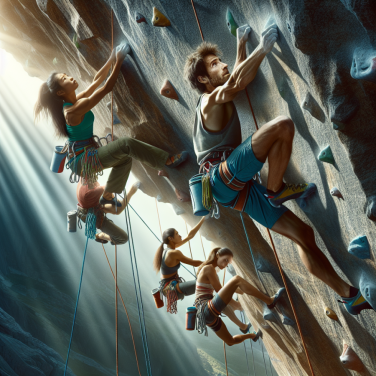Understanding the Basics: Different Styles and Techniques of Skateboarding
Skateboarding is a thrilling sport, recreation, and mode of transportation that has evolved with great diversity in terms of styles and techniques. This diversity has its foundation in variations in movements, tricks, and equipment that skateboarders use. Here, let's break down these different styles and techniques in skateboarding.
Firstly, the traditional or regular skating style is arguably the original way of skateboarding. This style involves riding the board with the left foot leading. Regular skaters would typically push off with their right foot while the left foot is on the skateboard. It is crucial to understand this basic stance, as it lays the foundation for balance and control while on the board.
In stark contrast to the regular style is the goofy style. This method involves skating with the right foot leading and the left foot used for pushing off. Common misconception has it that this method received its name because it is unusual or awkward, but in reality, it simply has to do with individual preference and comfort. Famous skateboarders such as Tony Hawk and Bob Burnquist both use the goofy skater style.
There are several other methodologies that are essentially variations of these two principle styles. For instance, switch skating involves the skater riding in the reverse direction from their usual stance. For a regular skater, this would mean riding goofy, and vice versa.
Freestyle skateboarding epitomizes the creative element of the sport. It involves performing tricks while standing still on a flat surface. Thus, freestyle tricks have a diverse range, relying heavily on balance and manipulating the board in inventive ways. Famous skateboarder, Rodney Mullen, is credited with pioneering freestyle skating.
Vert (short for vertical) skating is a process which involves skating on a ramp or other incline, and performing tricks whilst airborne. Skateboarders like Danny Way are well-known for their impressive vert skills, with tricks like the "Mega Ramp" cementing Way's place in the annals of skateboard history.
Street skating includes a combination of regular skateboarding techniques but performed on non-specialized, urban terrain such as stairs, handrails, benches, retaining walls, and other street furniture.
Lastly, longboarding is another popular variation of skateboarding. Longboarding is typically used for cruising, downhill racing, or simply transportation. This style requires a longer board, as the name suggests, which allows for a more stable ride and makes it easier to maneuver at high speeds.
Understanding these different styles and techniques is not just for aspiring skateboarders.
Read also:
The Ultimate Fan's Guide: How to Watch Soccer Games Live and Online
Delving Deeper: The Impact of Skateboarding Culture and Its Contribution to Sports History
Skateboarding has become an internationally recognized athletic pastime over the years, cementing its relevance in the heart of sporting history and shaping the culture in unprecedented ways. It has not only influenced sports but also arts, music, fashion, and language. This cultural shift has become progressively apparent as the years go by, and this impact on sports history is all-encompassing and multi-faceted.
The popularization and eventual globalization of skateboarding have significantly contributed to sports history. Introduced in the late 1940s and early 1950s by surfers in California who were looking for something to do when the waves were flat, it gradually captured a wider audience. It eventually went mainstream, with the first skateboards being sold in the 1960s. Soon, competitions were organized, and the first-world skateboarding championship was held in 1965, paving the way for skateboarding as a competitor game.
These breakthroughs set the stage for skateboarding's permeation into popular culture, creatively inspiring generations of skateboarders and non-skaters alike. This was an important development that catapulted skateboarding from a backyard pastime into the center of sports history, especially in a period where sports were generally constrained to traditional athletic activities, like basketball or baseball.
One of the most significant impacts of skateboarding culture is its influence on trending fashion. Skateboarding turned fashion and sportswear on its head. The loose-fitting clothing, the flat-soled Vans and Etnies sneakers, and the quintessential baseball caps worn backwards became iconic and transcended into mainstream fashion. Eventually, fashion brands started collaborations with skaters to create collections, further spreading the culture on a global scale.
Music is another area that unquestionably felt skateboarding's impact. Punk rock and hip-hop music are cornerstones of skateboarding culture, transcending from the background music of skateboard videos to the global stage. Skateboarding and these music genres developed a symbiotic relationship that expanded their reach across borders.
The resilience and creativity necessary in skateboarding have also led to an expansion and evolution of language. Terms like "ollie," "kickflip," and "grind" are now part of our everyday language, showing how skateboarding transcended its niche corner and became integrated into the global societal dialogue.
Over the last decades, skateboarding has gained recognition as a legitimate sport. After years of campaigning by the skateboarding fraternity, it was included in the 2021 Tokyo Olympics.




